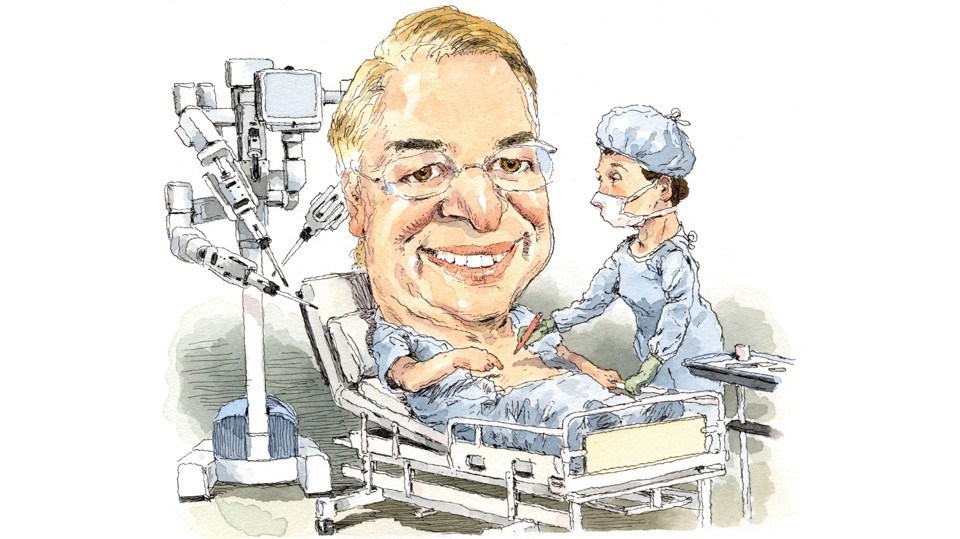Calit2 Director Larry Smarr Subject of Feature Story on Personalizing Surgery in March Edition of The Atlantic
By Tiffany Fox
Larry Smarr, the director of the California Institute for Telecommunications and Information Technology (Calit2) is the subject of “The Man Who Saw Inside Himself,” an article in the March 2018 edition of The Atlantic.

The Atlantic’s Mark Bowden tells the story of Smarr’s effort to harness the powerful 3D visualization technologies at the University of California San Diego division of Calit2 (known as the Qualcomm Institute, or QI) for applications in clinical medicine. The technology's high-resolution simulated “inside look” allowed Smarr's surgeon – Sonia Ramamoorthy, MD Chief of Colon and Rectal Surgery at UC San Diego Health – to visually explore the organs inside his abdomen before she carried out surgery on a portion of his sigmoid colon that was chronically inflamed and causing growing abdominal distress.
Bowden’s piece describes how QI Research Scientist Jurgen Schulze turned 150 abdominal 2D front-to-back MRI slices into an interactive 3D representation that patient Smarr and surgeon Ramamoorthy explored in Calit2’s StarCAVE immersive virtual reality space. Together they planned out the surgery based on Smarr’s personal anatomy – a unprecedented procedure that Ramamoorthy estimates saved one hour of time in surgery.
Ramamoorthy then enlisted Schulze to feed the 3D images of Smarr’s virtual transparent abdomen from his laptop into the da Vinci surgical robot system during the operation. This enabled Ramamoorthy and her surgical team to see the 3D “transparent Larry” alongside the real video feed from the da Vinci’s stereo high-definition camera inside of him. Ramamoorthy likened this first time experience in the operating room to the difference between “driving around before and after Google Maps.”
Smarr, who will be 70 this year, has since fully recovered from the surgery (and in fact, was walking 10,000 steps within two weeks of the five-hour procedure). He has shared the experience of personalizing abdominal surgery by way of lectures to medical groups, including giving a Surgery Grand Rounds lecture at UC San Diego Health in February 2017 and an invited talk in the Future Technology Session at the Annual Meeting of the Society of Laparoendoscopic Surgeons held in San Francisco in September 2017.
To learn more details about Smarr’s personalized surgery check out the links below:
Visualizing the Future of Surgery
Welcome to My Colon: A Tech Pioneer Turns to Virtual Reality to Guide His Own Surgery
This UC San Diego Professor Planned His Surgery in Virtual Reality
Media Contacts
Tiffany Fox
(858) 246-0353
tfox@ucsd.edu

